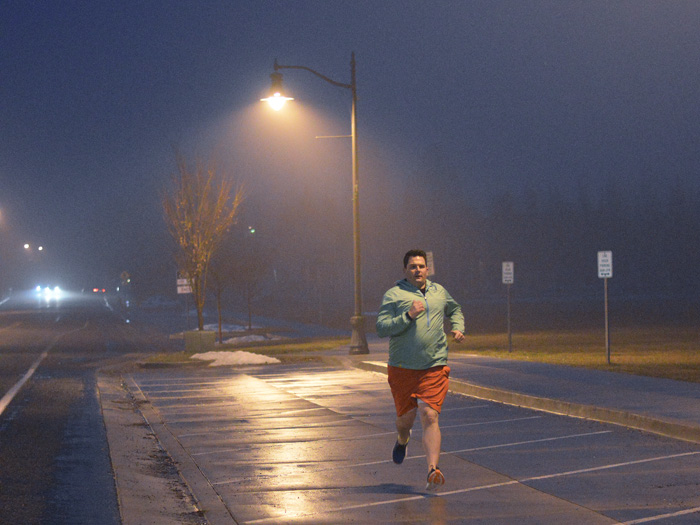We are 20 days into the New Year. Have you given up on your resolutions already? It’s not too late to get back. Now that my birthday is overland the holidays have ended, it’s time to get serious. So it’s time to take things to the next step when it comes to my fitness and weight loss goals.
Now, I am not saying that during the past 16 weeks I haven’t been doing anything. Here is my workout schedule:
 Treadmill
Treadmill
0—0.2 miles: walk at a 3.5-4.0 pace
0.2—5.0 miles: run at a 5.5 pace
5.0—5.2 miles: run at 6.0-7.0 pace
5.2—6.0 miles: walk at a 3.5-4.0 pace
This isn’t a training program I read anywhere; I just didn’t know what else to do. Focusing more on weight loss and increasing endurance have been my goals. Now that my endurance is up, and I plateau on my weight, it’s time to change things up.
Looking into what I could do here is what I found best works for me. Multiple studies show that regular strength training can improve running economy-how efficiently the body uses oxygen-by as much as eight percent, translating into greater speed and more muscle endurance. And it makes sense for runners to focus on their most important body part—their legs.
Try these workouts to strengthen your lower body:
But strong legs require a solid foundation. When you run, your abdominal and back muscles fire to stabilize your spine. Strengthening your core will help your legs also grow stronger.
Try these workouts for a stronger core:
I know that as I do these things that my weight will decrease, as long as I am also making wiser food choices. Shawn M Talbott, PhD, nutritional biochemist and former director of the University of Utah Nutrition Clinic said, “As a rule of thumb, weight loss is generally 75 percent diet and 25 percent exercise. An analysis of more than 700 weight loss studies found that people see the biggest short-term results when they eat smart. On average, people who dieted without exercising for 15 weeks lost 23 pounds; the exercisers lost only six over about 21 weeks. It’s much easier to cut calories than to burn them off. For example, if you eat a fast-food steak quesadilla, which can pack 500-plus calories, you need to run more than four miles to ‘undo’ it!
“So, what should you eat? It’s true that low-carb diets tend to be the most popular because they offer the fastest results, but they can be difficult to sustain. I recommend striving for a more balanced plan that focuses on fruits and veggies, lean proteins and whole grain carbs. And never cut calories too low (this causes your metabolism to slow, and you can start losing muscle mass). For a healthy daily calorie count, allow 10 calories per pound of body weight — so a 150-pound woman should shoot for a 1,500-calorie target. That way, you should be able to lose weight no matter how much you exercise.”
That means for me, 10 x 250 = 2500 calories. Sounds like a lot, but I probably do that too often in one sitting when I get a pork salad at Café Rio. Simples changes to help the weight drop off naturally will not only benefit my health, but also make running easier.
I know I can do this. Many times I have focused and been able to get to a healthy weight, but this time I am doing in without the use of suppliments. While diet and exercise are both important for long-term weight loss, remember this: “You can’t out-exercise a bad diet,” says Talbott.
 Let’s make 2017 a great year together. Let’s make smarting eating choices, working smarter and make these choices for ourselves and families. This is our year—so make healthy living great again.
Let’s make 2017 a great year together. Let’s make smarting eating choices, working smarter and make these choices for ourselves and families. This is our year—so make healthy living great again.
